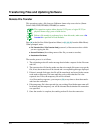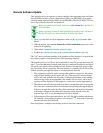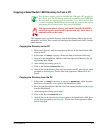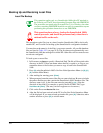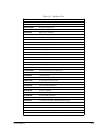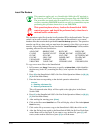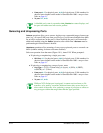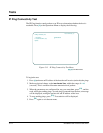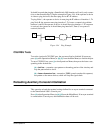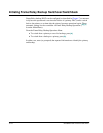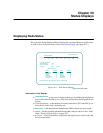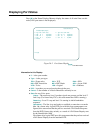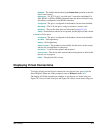
19-12 SmartSwitch 1800 4.0 User Guide, Rev 01
◆
From port
:
0–7
for physical ports,
8–63
for logical ports. Valid numbers for
physical ports depend on the model of SmartSwitch 1800—see port loca-
tions on page 6-1.
◆
To port
:
0–7, 8–63
.
A disabled port's state is reported as
Link_Disabled
on status displays, and
the port can neither send nor receive packets.
Quiescing and Unquiescing Ports
Quiesce
operations allow you to cause a single port or a sequential range of same-type
ports (e.g., all async PAD ports from port 0 to port 3) to become disabled when there
are no active connections on the port(s). Once disabled, the port(s) will remain dis-
abled until enabled using the
Enable
operation, after which time a
Quiesce
must be
performed again if that feature is desired.
Unquiesce
operations allow returning of one or more quiesced ports to a normal con-
dition (without waiting for them to become disabled).
Select an operation from the menu (Figure 19-1), items E–H. When prompted:
●
If quiescing or unquiescing a single port, enter:
◆
RLP Port
:
0–7
for physical ports,
8–63
for logical ports. Valid numbers for
physical ports depend on the model of SmartSwitch 1800—see port loca-
tions on page 6-1.
●
If quiescing or unquiescing a range of ports, enter:
◆
Port Type
:
1
(X.25),
2
(frame relay),
3
(async),
4
(SNA),
5
(BSCI),
6
(BSCB), or
7
(Voice).
◆
From port
:
0–7
for physical ports,
8–63
for logical ports. Valid numbers for
physical ports depend on the model of SmartSwitch 1800—see port loca-
tions on page 6-1.
◆
To port
:
0–7, 8–63
.
While an X.25 dialout port is quiesced, it cannot receive alarms or file
transfers, or be used by a remote Cabletron frame relay access device to
take control of the node. Also, quiescing a range of ports has no affect on
any port types within that range other than the type specified.



